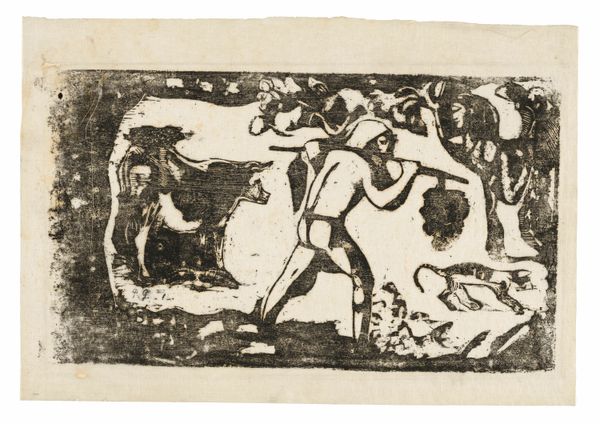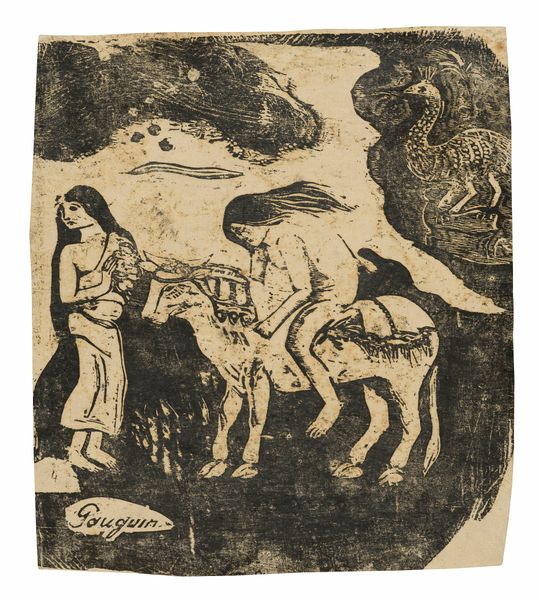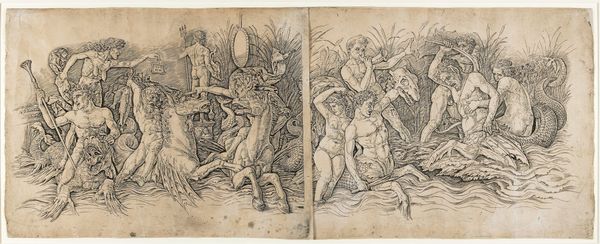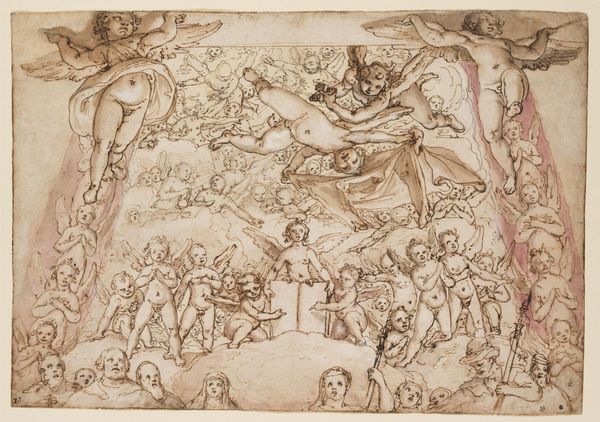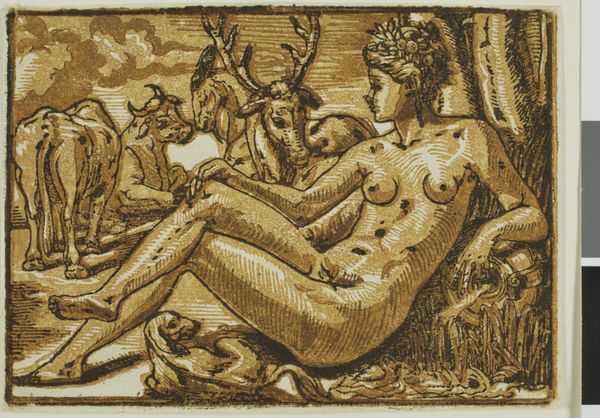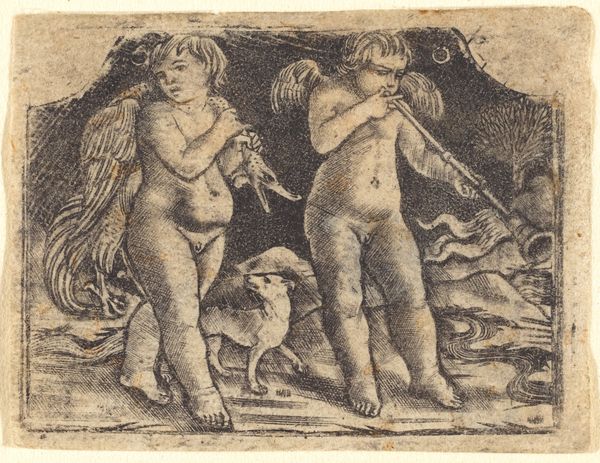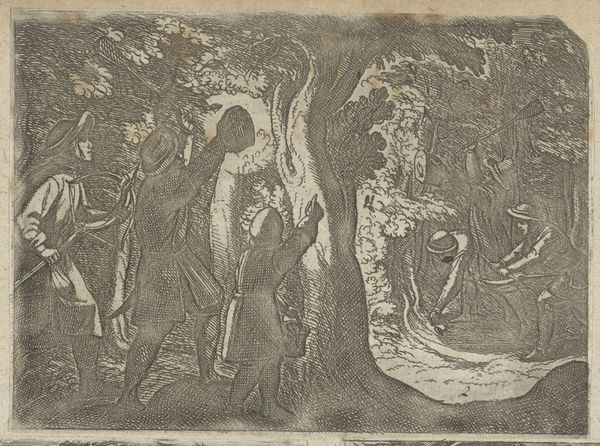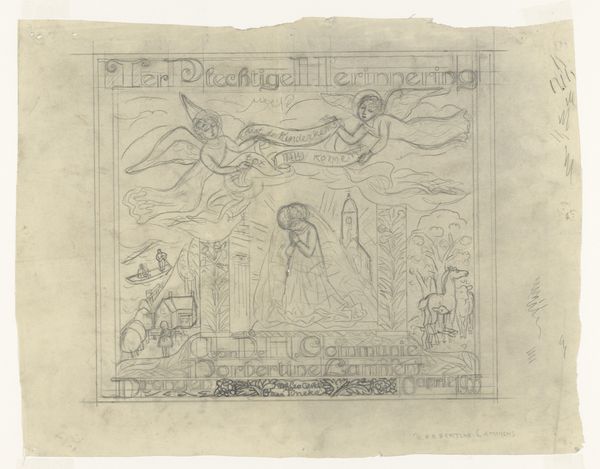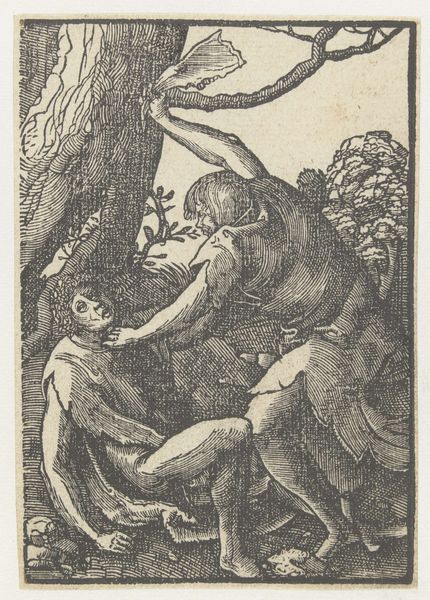
drawing, paper, ink
#
drawing
#
ink drawing
#
narrative-art
#
landscape
#
figuration
#
paper
#
ink
#
post-impressionism
Dimensions: 246 × 396 mm
Copyright: Public Domain
Editor: Gauguin's "Angel, Peacock, and Three Tahitians," created around 1902, rendered in ink on paper... There's something really striking about this work. The rawness of the ink drawing gives it this dreamlike quality, but the imagery feels almost like a clash of cultures, like nothing is from our world. What should we be paying attention to here? Curator: It's crucial to understand Gauguin's project as deeply embedded in colonial dynamics. His depictions of Tahiti and its inhabitants are always already mediated by his European gaze and the colonial power structures of the time. The figures, the angel with what we understand of Tahitians: how do you think he understood his role portraying what he understood of it? Editor: So, it's not just about the individual figures but more about the relationship between them as seen through a European lens? The way the Tahitian figures seem almost indifferent to the presence of the angel… Curator: Exactly. Consider also the peacock – not native to Tahiti. What does it signify within this constructed landscape? Exoticism? Otherness? It plays into a visual economy, a way of presenting the “other” that ultimately reinforces Western perceptions and desires. These representations weren’t formed in isolation but within institutional frameworks such as galleries that profited from a certain image of what "Tahitian" was to the general public. Editor: That makes sense. I always appreciated the colors and subject of this art, but did not quite understand the impact that political environment plays within the meaning of the painting. Curator: Indeed, a beautiful, exotic fantasy. Gauguin's vision, framed by his world and the markets into which his works were made and displayed. This new understanding should greatly help. Editor: Thank you, curator.
Comments
No comments
Be the first to comment and join the conversation on the ultimate creative platform.


